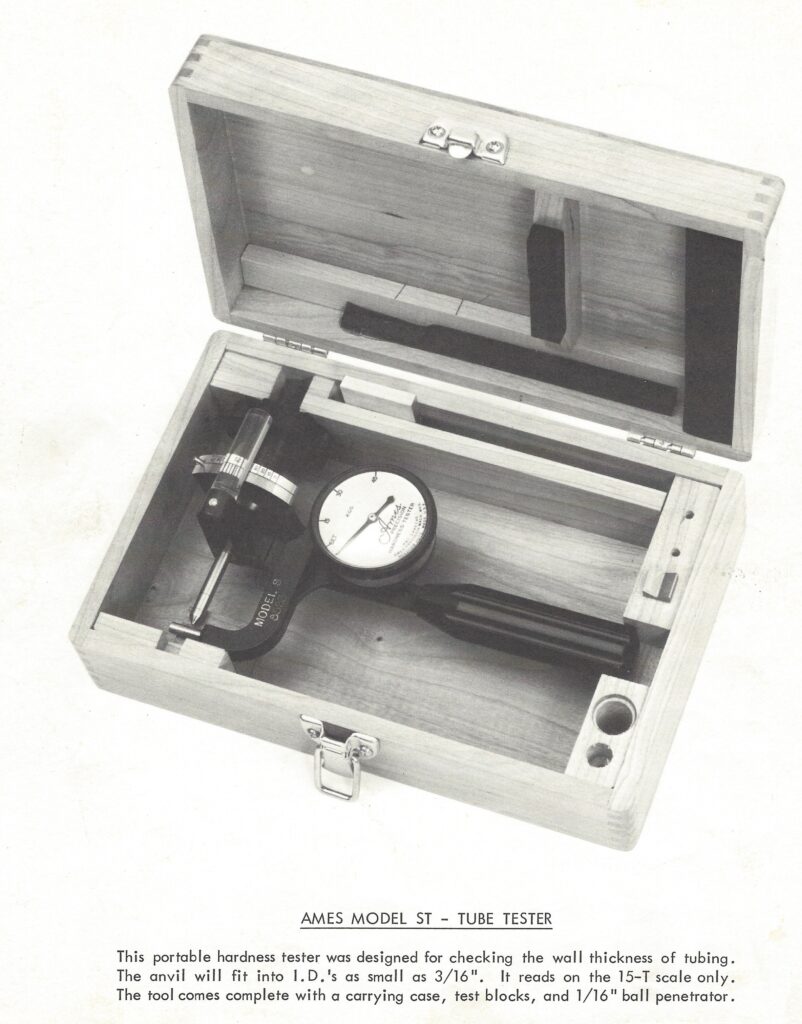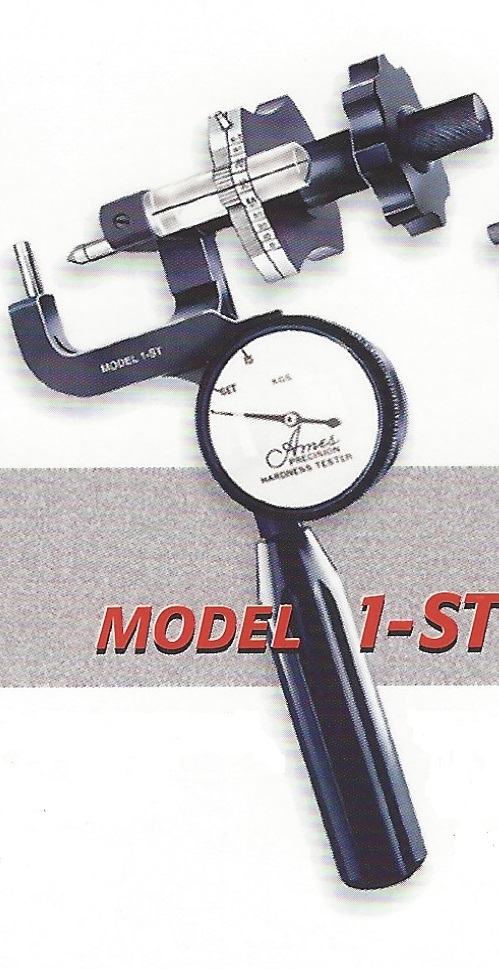In May of 1977, Ames announced the release of the Ames Model ST portable Hardness Tester. This superficial tester is specifically designed for testing small diameter or thin wall tubing. The small anvil will fit into the inner wall of tubing as small as 3/16″ and is effective in checking larger sizes as well. The tube hardness tester reads in the 15-T scale and comes in a high-impact case just like our other portable hardness testers.

The Ames model ST tubing tester uses a special cylindrical anvil to test soft tubular materials such as copper. This tester is recommended for small diameter tubing with thin walls. The maximum load for the model ST is 15 KG, anything greater will damage this tester.
Before you begin a hardness test using your model ST, be sure that the 1/16 ball penetrator is snuggly screwed into the end of the tester spindle shaft. The 1/18″ pin perpendicular to the spindle is the anvil.
How to use your Model ST Tube tester:
Step 1: Rotate the bezel (outer ring of the dial indicator) and position the face of the dial so that the dot on the face is directly below the indicator’s pointer hand.
Step 2: Position your part over the 1/8″ anvil and slowly rotate the handwheel until the penetrator makes contact with the part and moves the pointer hand on the dial indicator to the line marked set. Stop at this point. You have reached the minor load point (3 kg).
Step 3: Rotate the numbered aluminum barrel dial, so that the 1/16 inch pin rests on top of the lucite magnifier.
Step 4: Rotate the handwheel until the pointer hand on the dial indicator reaches the major load of 15 kg (do not over or undershoot the target). Immediately after reaching the major load, rotate the handwheel back to the “set” (minor load) position.
Step 5: To read the Rockwell hardness, find the fine line on the magnifier. The scale below the magnifier on the aluminum barrel is graded in units of 10. The short hash marks are in units of two.
